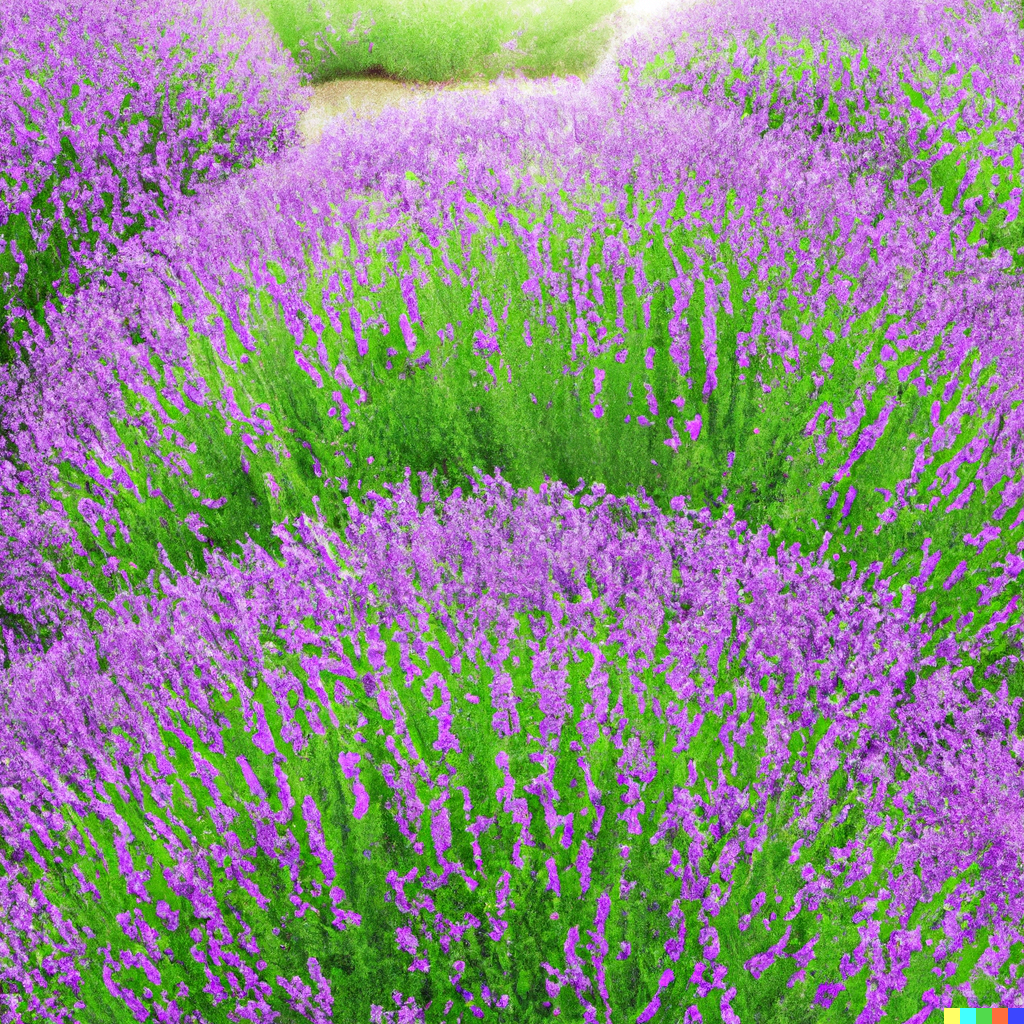Learn How to Prune lavender in spring once new growth starts. Cut flowering stems back by 1/3 their length above the lowest leaves. Remove dead wood and shape for fuller regrowth. Disinfect pruners between plants.
Listen to this guide…
or read on …
Revitalise Your Lavender with Proper Pruning for Prolific Blooms
Without pruning, lavender plants become woody and flowerless over time. But strategic annual trimming revitalises growth and encourages prolific blooms year after year. The right timing and technique keep lavender plants tidy and flowering at their peak. Pruning prevents leggedness while improving air circulation and light exposure to interior branches.
Follow this guide to understand when and how to prune lavender for boosted flower power. We’ll cover techniques from hedge trimming to rejuvenating overgrown pots. With the proper gear, knowledge of plant cues, and step-by-step methods, you’ll prune with confidence and get those purple blooms flourishing again. Soon, you’ll think of pruning as an energising “haircut” for your lavender instead of a chore. Let’s refresh your lavender with rejuvenating pruning.
When to Prune Lavender
Prune lavender in spring once new growth emerges after winter dormancy. Late spring is ideal, between April and June depending on your climate. Pruning stimulates the plant right before the summer flowering cycle.
Avoid pruning in fall through winter since new growth could get damaged in cold weather. However, you can prune lightly after initial flowering in summer to tidy plants and encourage a second, smaller bloom before winter dormancy.

Always prune when the plant is dry to avoid spreading diseases. Disinfect pruning tools with rubbing alcohol or diluted bleach between plants. Annual pruning keeps lavender vigorous, so don’t neglect this essential upkeep!
Pruning Tools Needed
Having the right pruning tools makes trimming easier:
Bypass hand pruners – Make clean cuts on tender new growth.
- Loppers – Long handles provide leverage on thick older stems.
- Hedge shears – Quickly shape bushy hedges.
- Scissors – Snip stray stems on more delicate plants.
- Gardening saw – Remove thick old wood.
- Sterilising spray – Prevent disease spread.
- Gardening gloves – Protect hands from scratches.
- Bags – Safely dispose of trimmings.
Invest in quality tools like bypass pruners. Clean sharp blades minimise damage that inhibits re-growth. Disinfect tools after each plant.
How to Prune Lavender that is Established
Here’s how to prune overgrown, mature lavender:
1. Remove all dead, damaged branches down to healthy wood.
2. Cut back all remaining flowering stems by 1/3 their height. Make cuts above leaf sets.
3. Shape wider plants by lightly trimming sides. Retain natural shape.
4. Clear out interior branching debris to improve air circulation.
5. Snip stray shoots sprouting from a woody base.
6. Rake and dispose of trimmings promptly since it may harbour pests or diseases.
7. Water plants well after pruning to aid recovery.
8. Watch for a new flush of growth within weeks as lavender responds.
Proper annual pruning restores lavender’s youthful vigour and prolific flowering.
How to Prune Lavender Hedges
To trim formal hedges:
Prune hedge lavender in early spring before new growth emerges.
- 1. Trim sides first with hedge shears for straight edges. Cut back lightly.
- 2. Shape the top flat or rounded as desired.
- 3. Make subsequent trims through summer as needed to maintain shape.
- 4. Do not shear into thick, old wood, only trim new green shoots.
- 5. Remove any woody growth or unsightly parts.
- 6. Disinfect tools after each cut to prevent bacterial infections.
- 7. Rake away trimmings promptly to encourage air circulation.
Neatly shaping lavender hedges gives a refined, formal look but requires diligence to maintain trimmed silhouettes.
Cutting Back Potted Lavender
For potted lavender, prune:
When it outgrows the container or becomes top-heavy.
If lower leaves drop from lack of light.
To control the size and encourage compact growth habits.
Remove any dead leaves or unsightly growth.
When the plant is slightly rootbound. Pruning triggers new roots.
After flowering concludes if blooms lack vigour.
In early spring before new growth emerges.
Potted lavender may need pruning 1-2 times per year. Cut all stems back by 1/3 their length. Remove spent blooms anytime they fade. With enough sunlight, potted lavender rebounds quickly after cutting back.
Shaping Lavender with Pruning
Besides revitalizing plants, pruning crafts lavender into ornamental shapes:

- Form rounded domes by trimming just above the lower leaves.
- Create square hedge corners using a mesh box as a guide.
- Encourage a treelike standard with a single woody trunk by removing lower branches.
- https://www.rhs.org.uk/advice/beginners-guideSculpt spirals or geometric globes by precisely trimming side shoots.
- Train cascade or fountain shapes by selectively pinching certain stems.
- Grow lavender pyramids or cones using a wire frame for support.
- Shape into animal topiaries like birds or bunnies for whimsical accents.
Let lavender’s growth habit dictate what forms work best. Dwarf varieties suit containers while English lavender becomes woody decorative standards.
Signs Your Lavender Needs Pruning
Watch for these clues that your lavender needs a trim:
- Leggy, stretched-out growth habit.
- Lacklustre flowers or non-blooming stems.
- Deadwood accumulates at the base and interior.
- Overall plant decline and dieback.
- Foliage looking tired, discoloured, or sparse.
- Overgrown, unwieldy shape.
- Small leaves only at branch tips indicating poor air circulation.
- Overcrowded, dense interior branches.
- Lower leaves drop from lack of light exposure.
Routine annual pruning prevents plants from ever appearing sadly neglected. But revive struggling plants right away.
Pruning Don’ts
Certain pruning practices harm lavender:
- Shearing hedge surfaces can create blunt cuts susceptible to disease. Always use bypass pruners.
- Trimming into thick, woody bases where no new growth will emerge.
- Pruning late summer through winter when the risk of freezing damage is higher.
- Cutting back improperly by removing all foliage or flowers.
- Neglecting to disinfect tools between plants enables infections.
- Leaving cut debris around plants inviting pests and illness.
- Trimming plants when wet, spreading blight or mould.
- Imprecise cuts that remove too much live wood.
- Aggressive rejuvenation pruning stresses plants.
Stick to proper timing, tools, and technique. Avoid harsh shearing, imprecise hacking, and over pruning which cause decline.
Conclusion
I hope you have enjoyed this guide on How to prune Lavender and all the joy it can bring.Much like a trim restores your hair’s condition, shape, and shine, Lavender benefits immensely from annual pruning. But it must be executed with care and strategy. Pruning is not simply hacking plants back randomly. Follow guidelines tailored to your variety’s growth habits and the desired final form. Precision in where, how much, and when you cut keeps plants vigorous and flowering.
Yet also allowing for flexibility each season. Adjust to the plant’s cues instead of forcing unnatural shapes. Work with the lavender, not against it. Soon you’ll intuit exactly how much to cut and where. But if in doubt, always err on the side of less pruning versus overcutting. With mindful attention, this “haircut” ritual will become second nature. Soon, you’ll be snipping away with confidence. Remember, the end goal is plants that are healthy, happy, and blossoming in abundance.
Do share any tips or comments you have on How to prune Lavender. I would love to hear from you!






